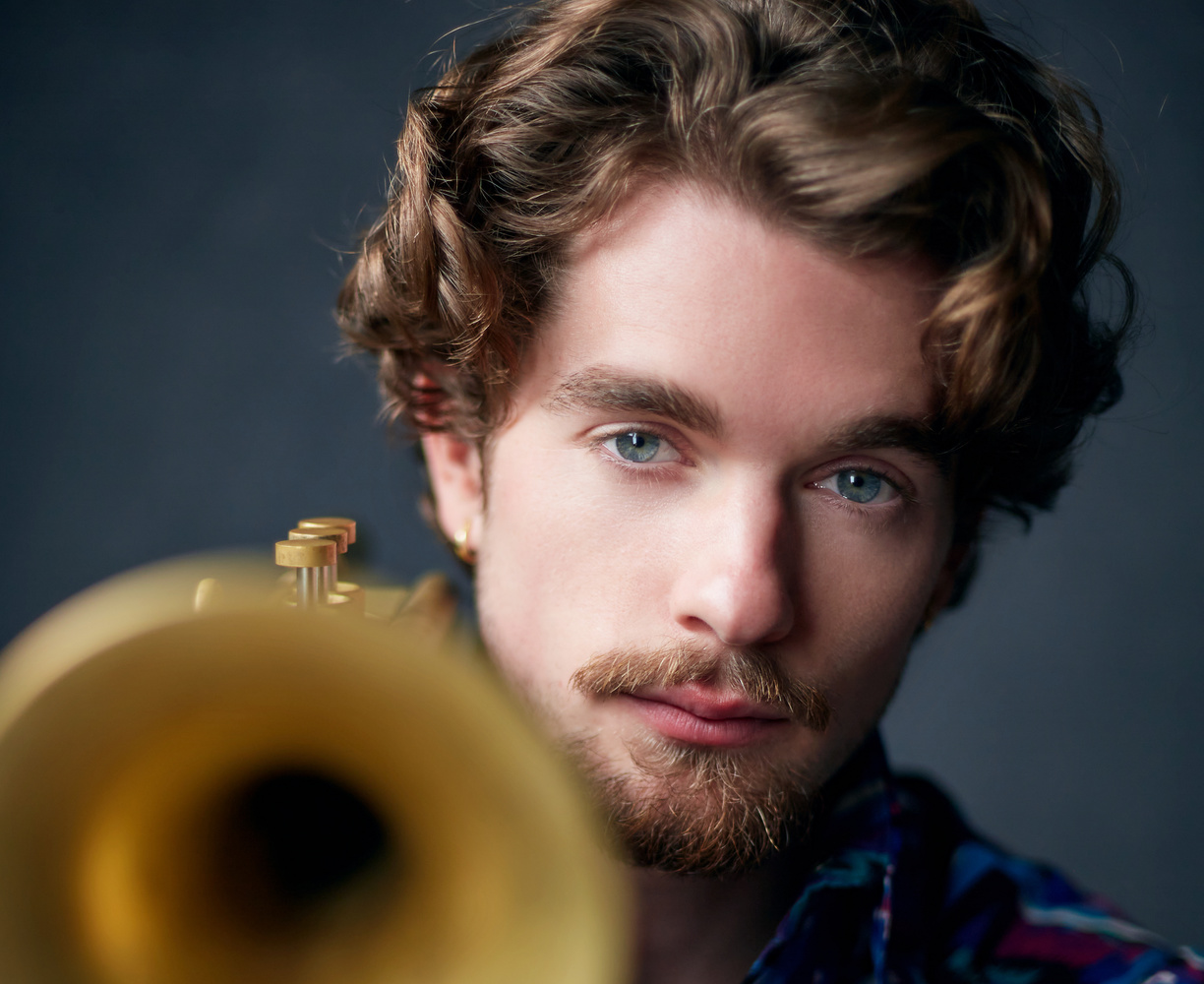Capturing portraits of musicians is one of my favorite things to do. As a musician myself, I think that I have a unique perspective that helps me to connect with my musician clients. Working with other creatives always makes for an inspiring portrait session, and finding novel ways to incorporate an instrument into a portrait is a fun challenge. In today’s article and accompanying video, I will give you five tips that have helped me create engaging portraits of musicians.
1. Start With Headshots
Whenever I photograph a musician, I start the session with head-and-shoulder headshots. There are a number of reasons why I start this way. First, I have found that many musicians do not have a great photo of their face alone, and instead, their promotional photos tend to be a variety of portraits with their instruments. In a practical sense, providing them with a headshot makes sense, although this is not my main impetus. Beginning the session with headshots helps me accomplish my artistic goals and also connect with the client.
Let me explain: First, starting with a head-and-shoulders headshot allows me to coach my client on facial expressions and angles, allowing both of us to bring clarity to the kinds of expressions we prefer in the portraits. Second, it establishes that the artist is more important than the medium (more on that later), and third, when the client sees an awesome headshot, which they didn’t expect or think they needed, it sets a positive tone for the entire shoot, and makes the collaboration exciting and fun.
Take, for example, this headshot of jazz trumpeter Tony Glausi. When I told Tony that I wanted to begin his session with headshots, he was gracious to allow me some leeway, although didn’t think headshots were necessary. This is probably because most people think of corporate photos or “glamour shots” when you say the word “headshot.” Once he saw the images we captured of his face, he immediately understood the importance and impact of an awesome headshot, and was inspired for the rest of our session.

2. Artist First, Medium Second
As a musician, I have thought quite often about being an artist and the role that my bass plays in the process. It’s easy to say, “I’m a bassist,” but as I’ve grown both musically and as a photographer, I have realized that in some way the art transcends the medium being used. If I were deprived of my bass or camera, I would not cease to be an artist. So, without getting too philosophical, I like to pay close attention to the artist and not only their preferred medium.
For example, if I were to take a photograph of a poet, I would not necessarily put a pile of books around them, or photograph them with a quill and ink. Although this approach can be effective, I encourage you to think outside of the box when working with musicians. In my musician portraits, I keep my attention on the human, the one-of-a-kind creative being that is in my studio, and the privilege it is to capture them at a singular point in time. This makes for a more intimate, engaging, and artistic portrait, and also takes away some of the self-imposed limits we set for our collaborations.

3. The Instrument is Not a Prop
Once you have established trust with your client, and examined them as artist first, it’s now time to introduce their preferred medium into the session. It is extremely important to understand that an instrument is not a prop. Using the instrument as a prop like a ladder or couch is usually not the best approach, because it diminishes the importance of the artist’s chosen medium. Remember that the instrument is the artist’s prized possession, and they are excited to have it incorporated in a way that respects it artistically. Although this may seem like a contradiction of what I just said above, it is not. While the artist is primary in importance, the instrument also needs to be a comprehensive part of the composition, and rendered in a way that enhances the portrait without becoming cliche.
In this image of jazz bassist Martin Wind, I wanted to create something that was not only novel, but also showed the power of the double bass. My idea was that Martin should hold his bass over his shoulders, while I photographed a few different angles. The resulting image conveys not only the physical weight of the bass and “burden” it can be, which is something all double bass players can relate to, but it also conveys of the bassist carrying the world, or in this case, the entire band, on his shoulders.

4. Get in Close
Since I am at heart a headshot photographer, I love to get in close on my musician subjects. I highly recommend giving this a try when taking portraits of musicians. Of course, I recommend taking a variety of angles, poses, and crops, since this is best practice and will provide a wonderful variety for your client to choose from. But, often photographers fail to get in close when photographing musicians with their instrument.
Take, for example, this portrait of Peter and his double bass. All the viewer needs to understand the photo is the scroll of the bass. Or, in the portrait of Tony below, the bell of his trumpet makes it clear that he is a trumpet player, without forcing attention to the trumpet. So, don’t be afraid to get in close, and experiment with showcasing very little of the instrument. This often makes for the most impactful portraits.


5. You Don’t Need Them to Play the Instrument
It has been my experience that having musicians play for me while I photograph them in my studio generally results in boring images. I think there are a few reasons why this is true. First, when a musician is in the act of playing, their eyes are usually closed, and many of them (myself included) will make strange faces or contort their bodies as they play. If I were photographing a live performance, I think this all adds to the photos, but in the studio setting, it seems forced and out of place.
Second, when they are playing for you in the studio, they are usually just casually playing a few notes, and not in their “zone” as a musician, which changes the entire dynamic of the resulting photos. There are exceptions to this rule, of course, but I think it’s a good general practice. I do advise that you let them play their instrument for you while you set up your lights and take some test shots. In this way, you have time to get your setup just right and there are no awkward pauses in the shoot.

Conclusion
As with any article of this nature, it’s important to remember that the above “rules” were made to be broken. To be clear, I suggest that you don’t think of anything I have said as rules, but as guidance in creating a successful musician portrait. As with all art, everything is subjective and open to interpretation, and your ultimate goal when photographing musicians is to help them fulfill their artistic vision for the shoot and leave your studio thrilled with the results.






Oh boy, not one double bass player will ever hold his bass this way as shown here. Never! And you see it on the picture how he's struggeling holding the bass over head. And what's the story behind the flute and the shoes? At least I don't see any musician here who is really connected to his instrument (maybe the trumpet player).
Psssstt...there's a video and words (aka written text) that explains stuff.
A double bass weighs around 25 lbs. He's not struggling at all. It's a pose.
Ironically, in a previous photo session with another photographer, that same bassist is jumping in the air holding the bass. Plus he is one of the premier jazz bassists in the world today. I have been a double bassist for over 20 years myself, and I think that between the two of us, we are able to determine what can be done with a bass safely. As Alex said, a bass is not that heavy. It's hollow LOL
These are awesome, and I wouldn't even waste my time explaining anything to that troll.
Thanks, Matt! And you are right, of course.
Wow these are great photos. Fantastic lighting and composition.
Thank you!